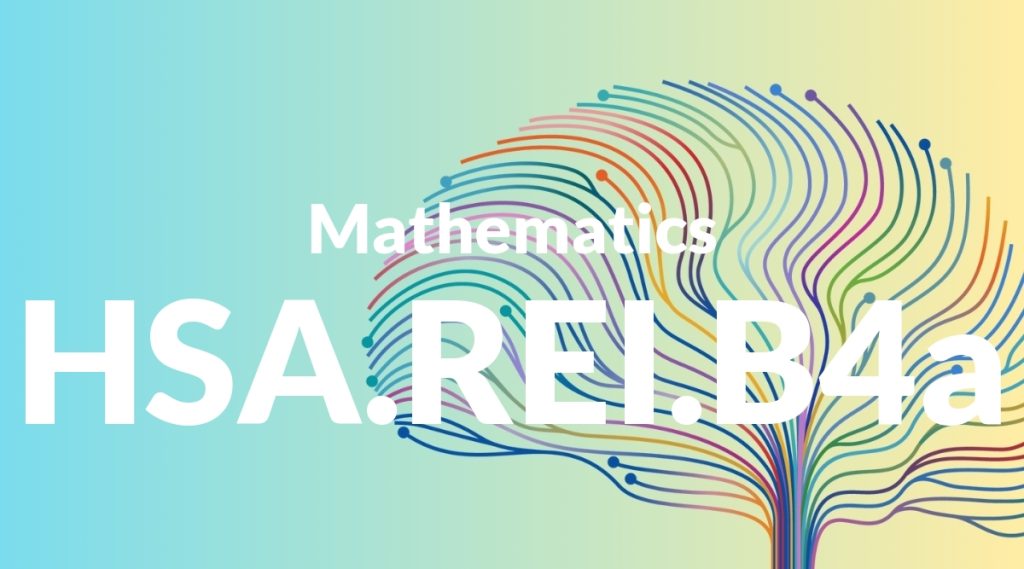Standard: HSA.REI.B4a – Use the method of completing the square to transform any quadratic equation in x into an equation of the form (x – p)² = q that has the same solutions. Derive the quadratic formula from this form.
Grade level: High School: Algebra
Subject: Mathematics
Domain: Reasoning with Equations & Inequalities
Teacher Overview
This standard focuses on using the method of completing the square to transform any quadratic equation into a specific form that reveals its solutions. It is crucial because it provides a foundation for understanding the derivation of the quadratic formula, a fundamental tool in algebra. Before tackling this standard, students should be comfortable with solving quadratic equations by factoring and have a solid grasp of algebraic manipulation.
After mastering this standard, students will be able to solve more complex quadratic equations and apply these techniques to real-world problems in various fields, enhancing their problem-solving skills.
Common Misconception 1
A common misconception is that completing the square alters the solutions of the quadratic equation. This is incorrect because the transformation is algebraically equivalent, preserving the solutions.
Intervention 1
To address this misconception, use a series of examples to show that the solutions remain constant before and after completing the square.
Common Misconception 2
Another misconception is that the method of completing the square is only applicable to certain quadratic equations. This is false because the method can be applied universally to any quadratic equation.
Intervention 2
To correct this, demonstrate the method with a diverse set of quadratic equations, highlighting its universal applicability.
Prerequisite Knowledge
Students should be familiar with solving quadratic equations by factoring, basic algebraic manipulation, and the properties of exponents and radicals.
Subsequent Knowledge
Students will develop the ability to solve more complex quadratic equations, understand the derivation and application of the quadratic formula, and apply these techniques to real-world problems in various fields.
Instructional Activities
- Guided practice on completing the square with different quadratic equations.
- Group activities where students derive the quadratic formula from the completed square form.
- Real-world application projects involving quadratic equations.
- Interactive simulations showing the geometric interpretation of completing the square.




